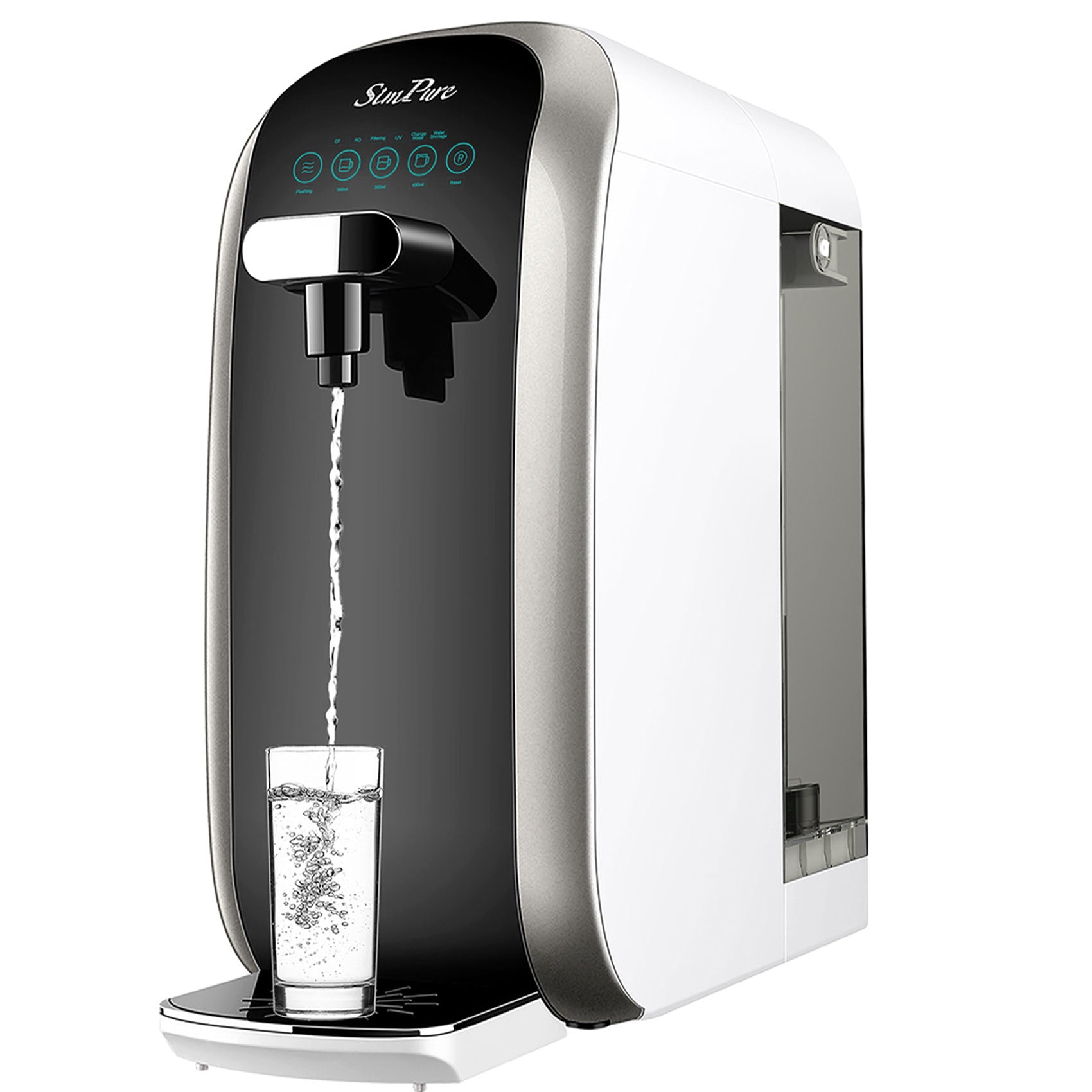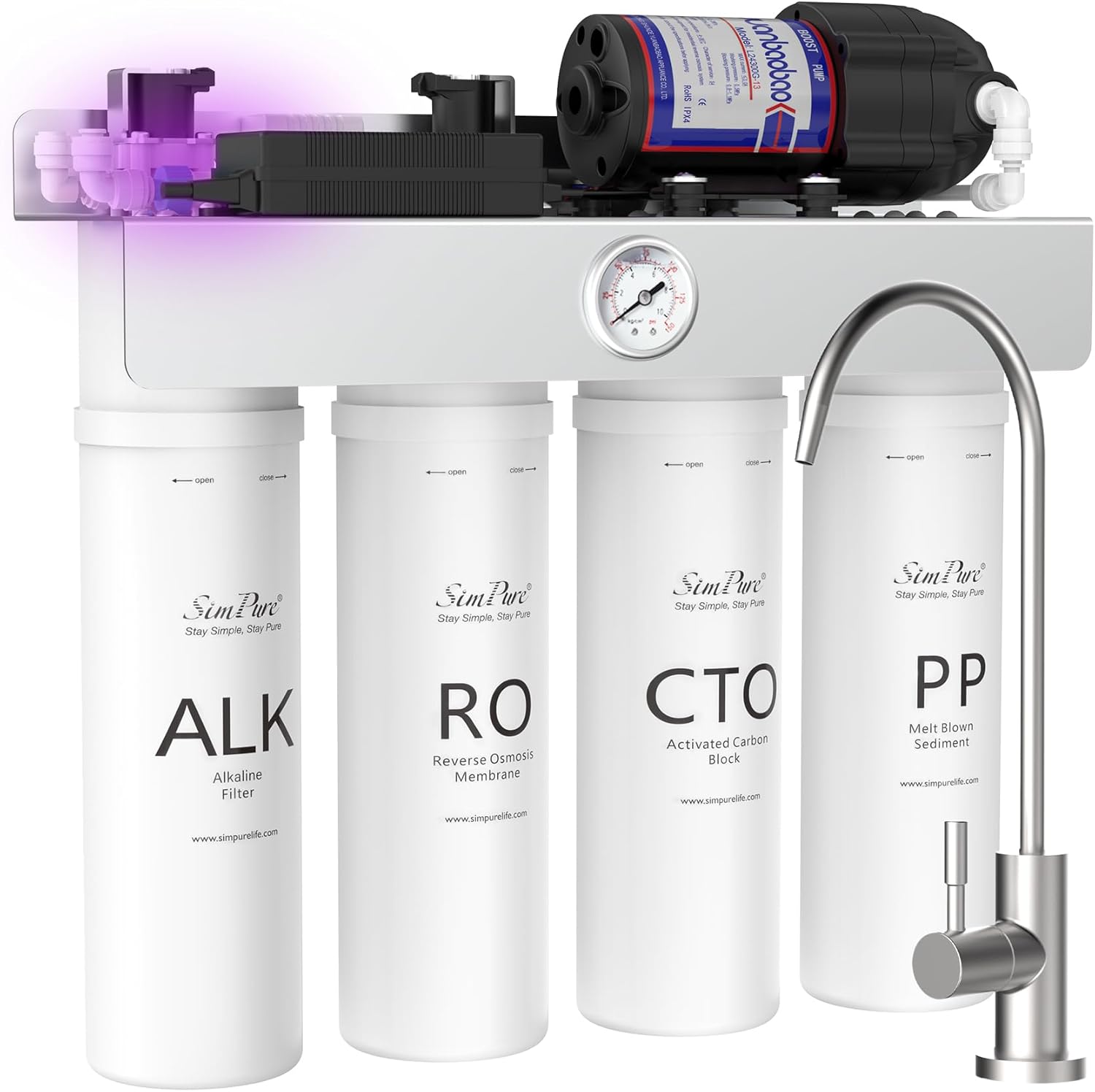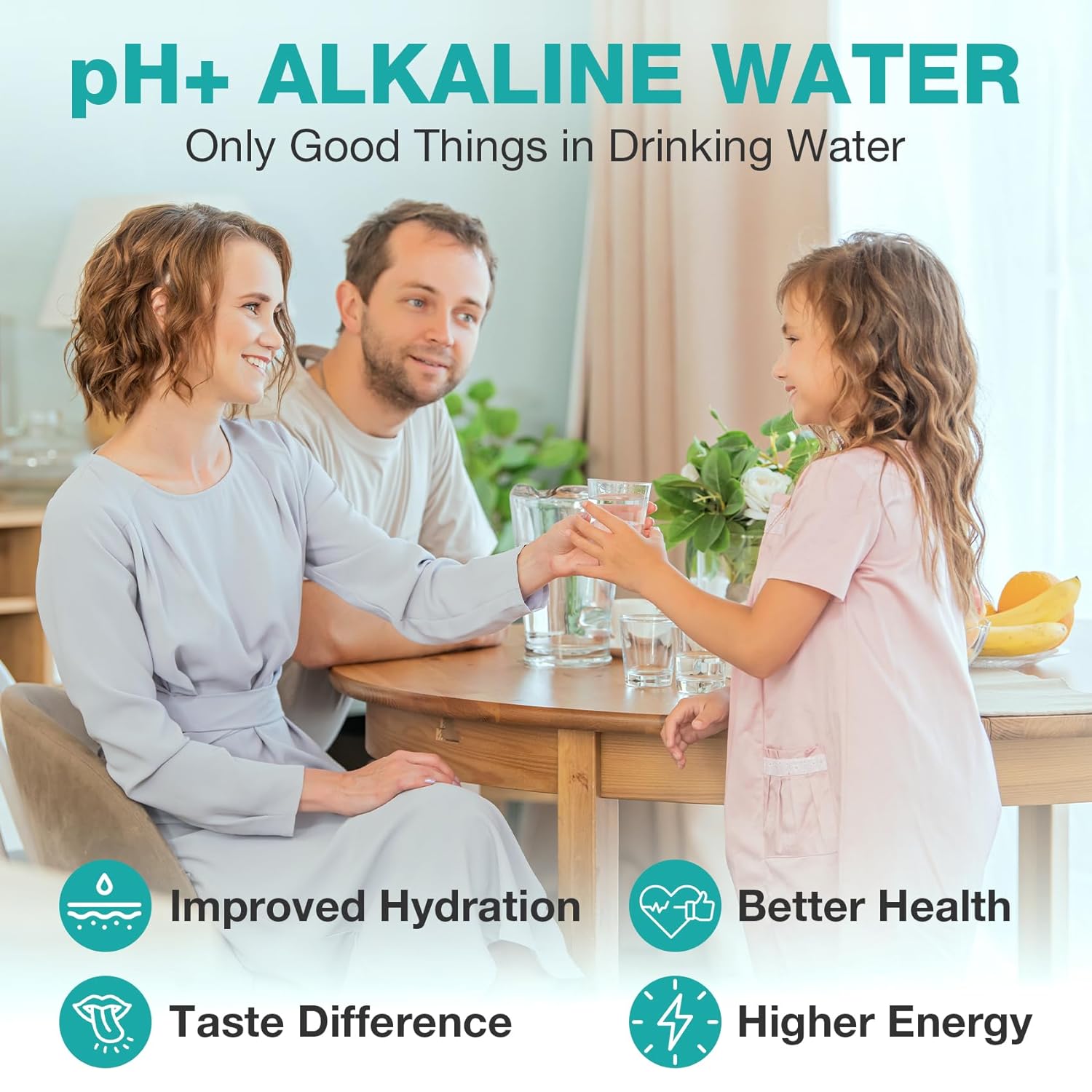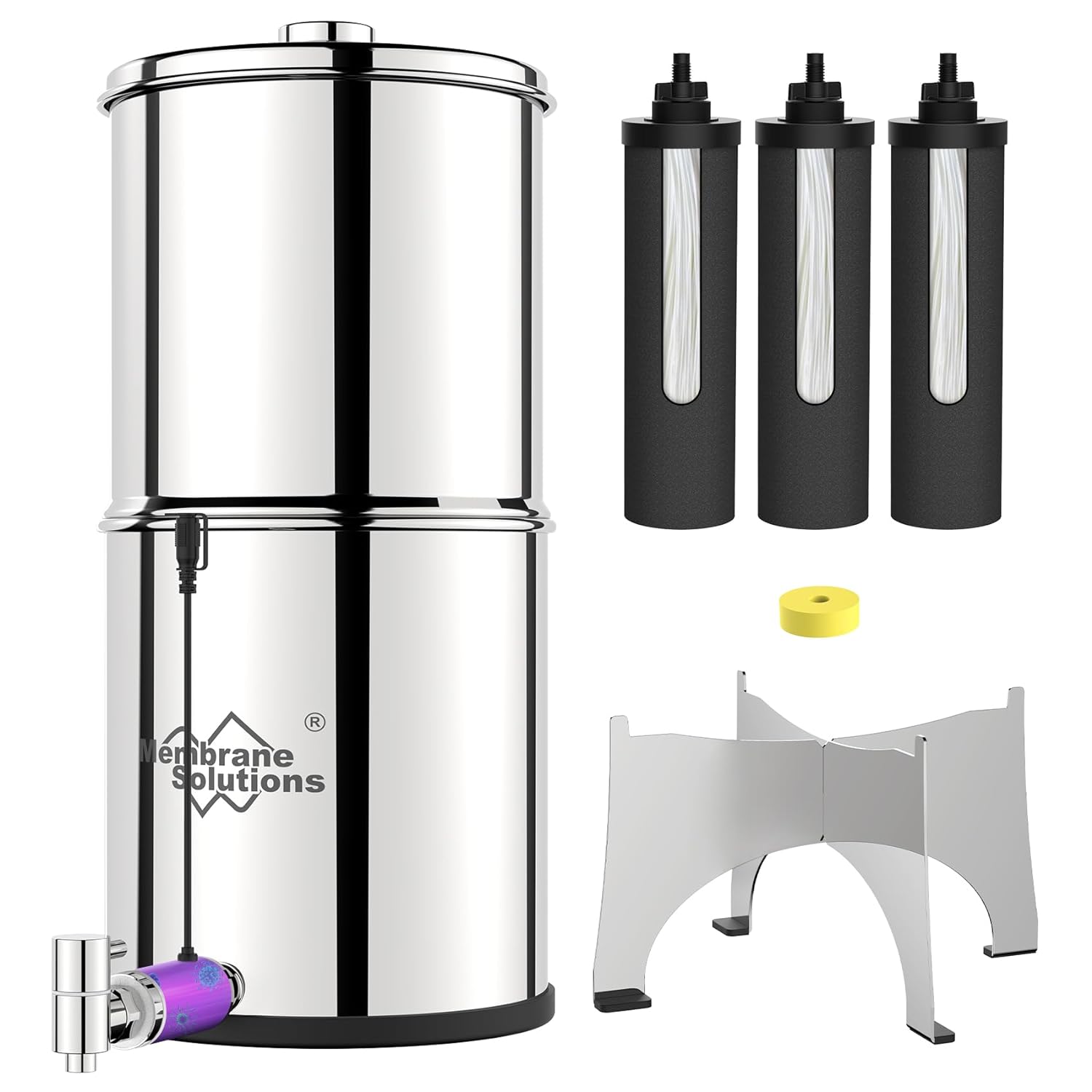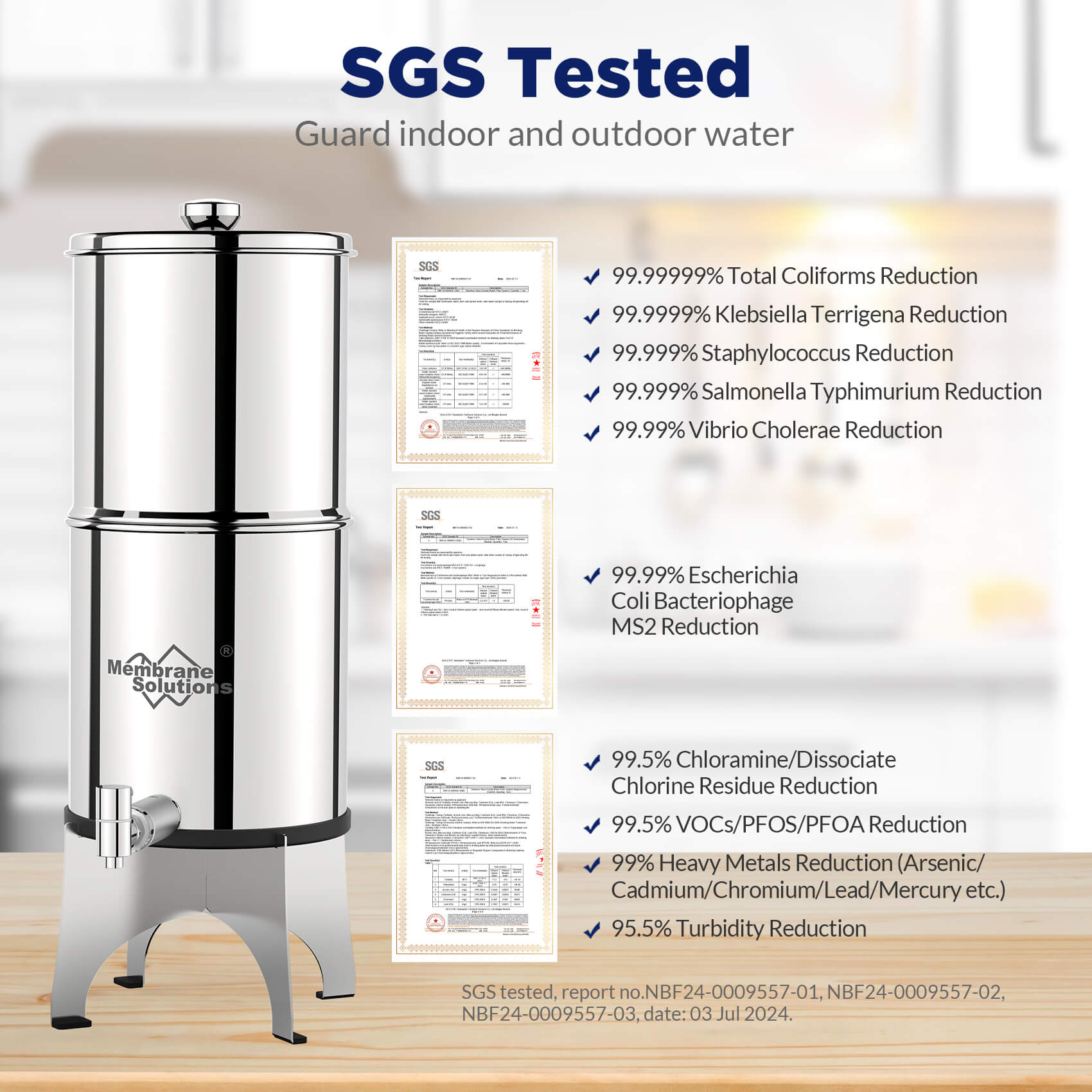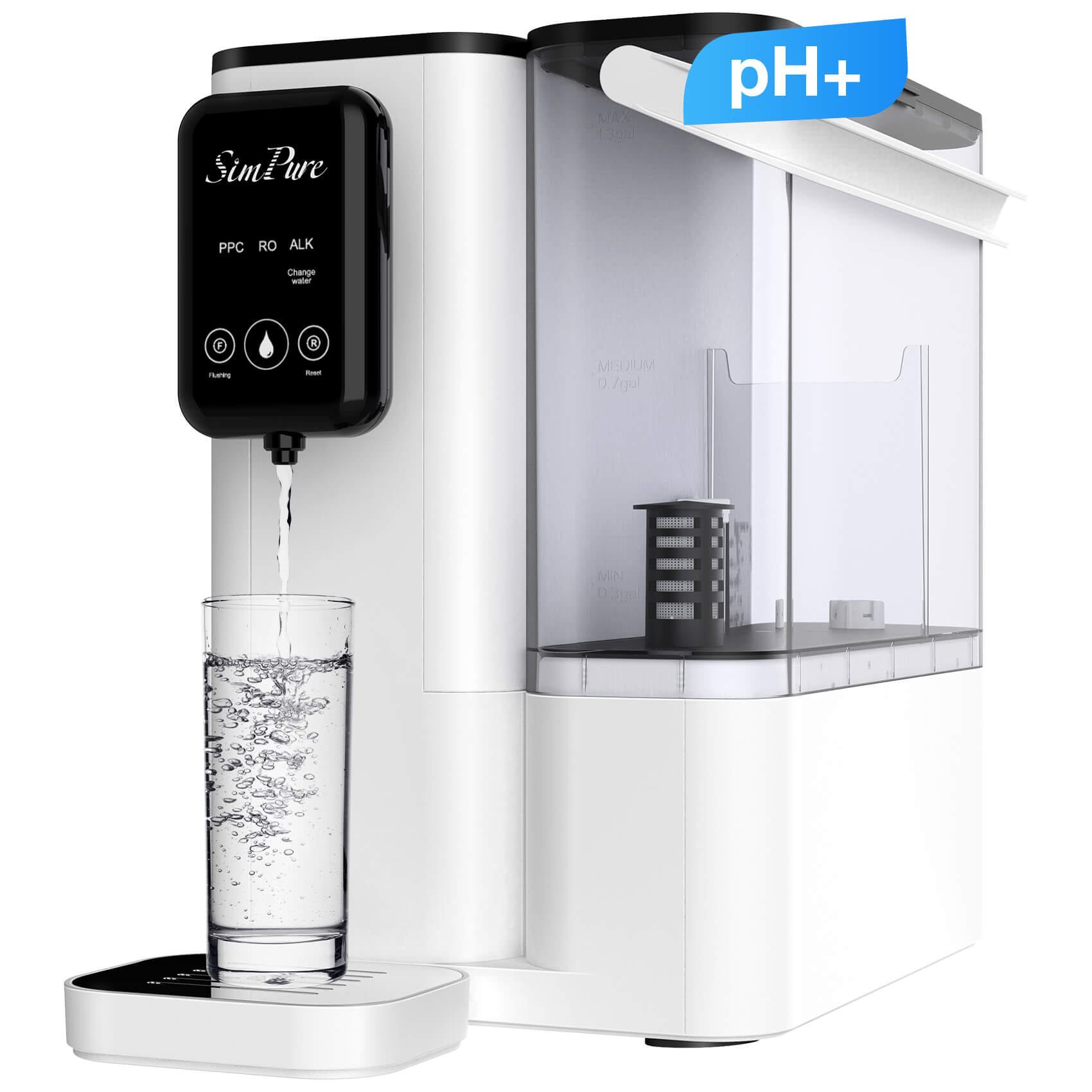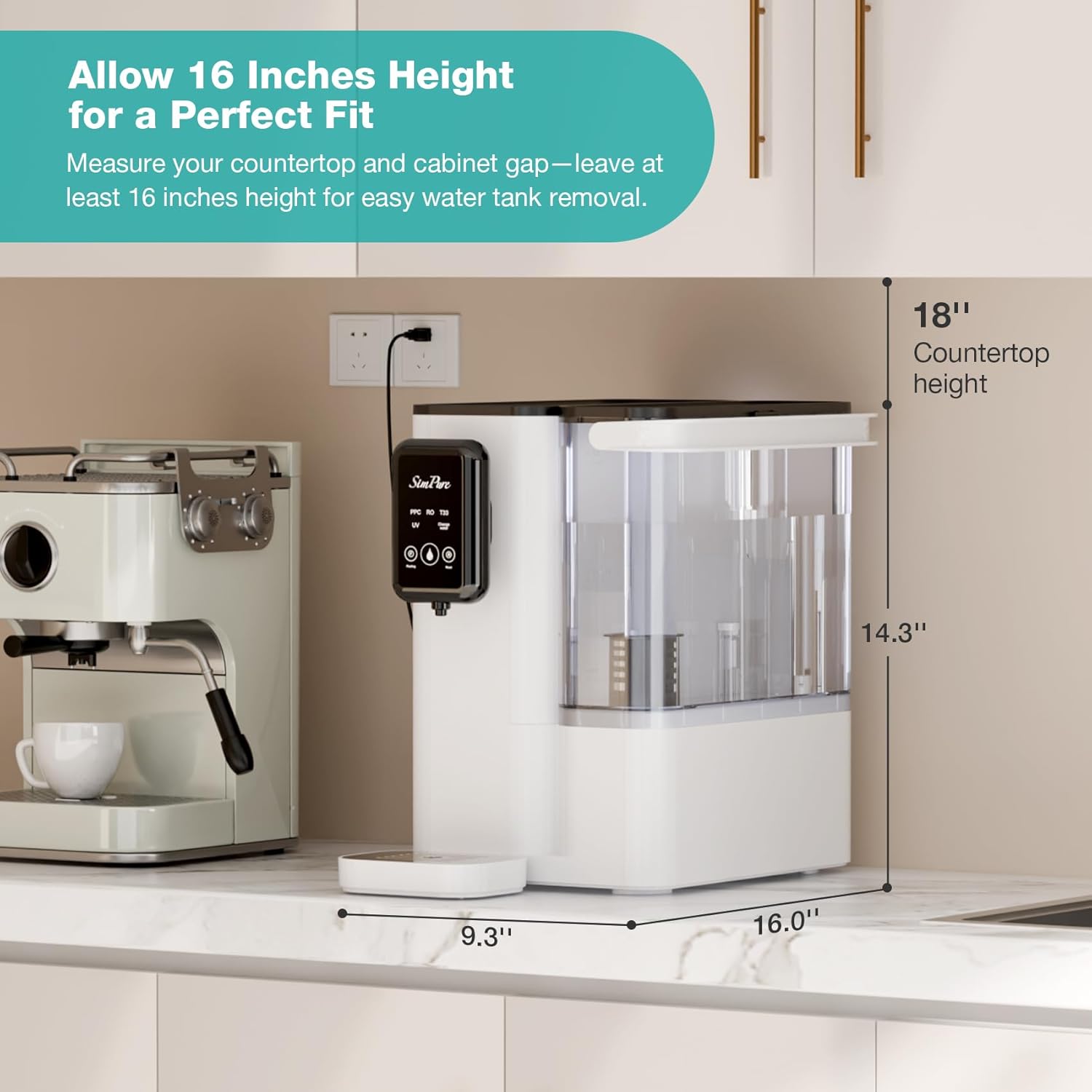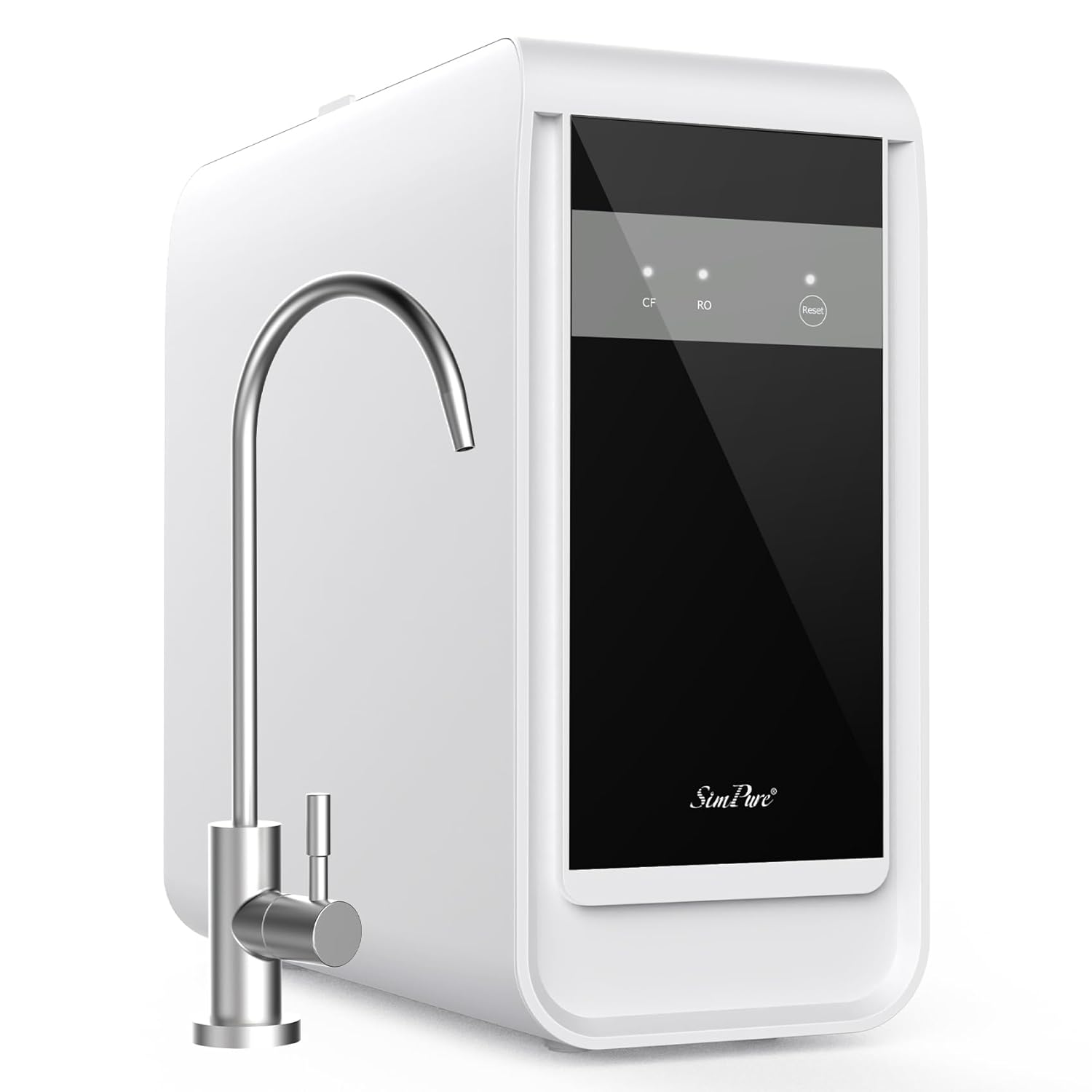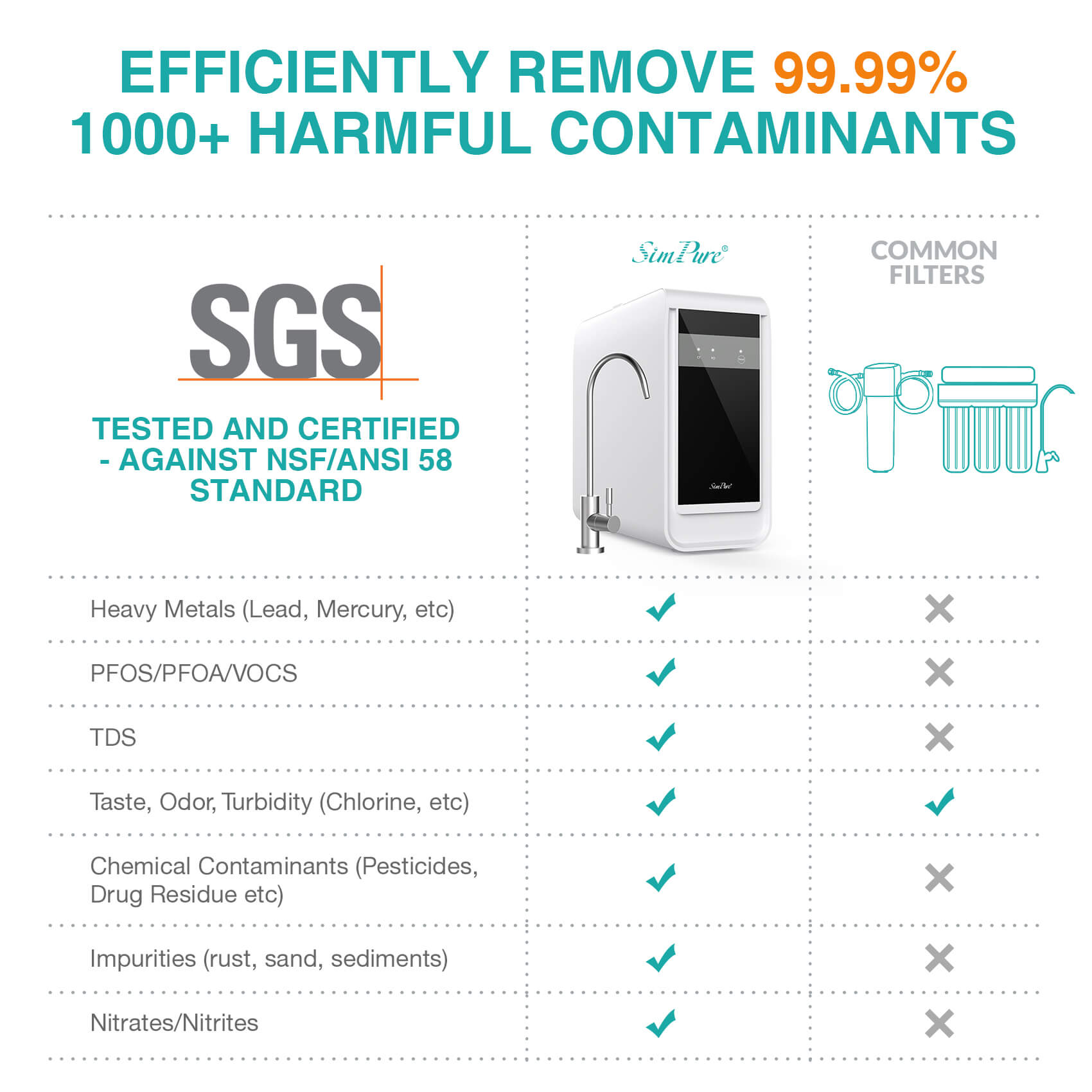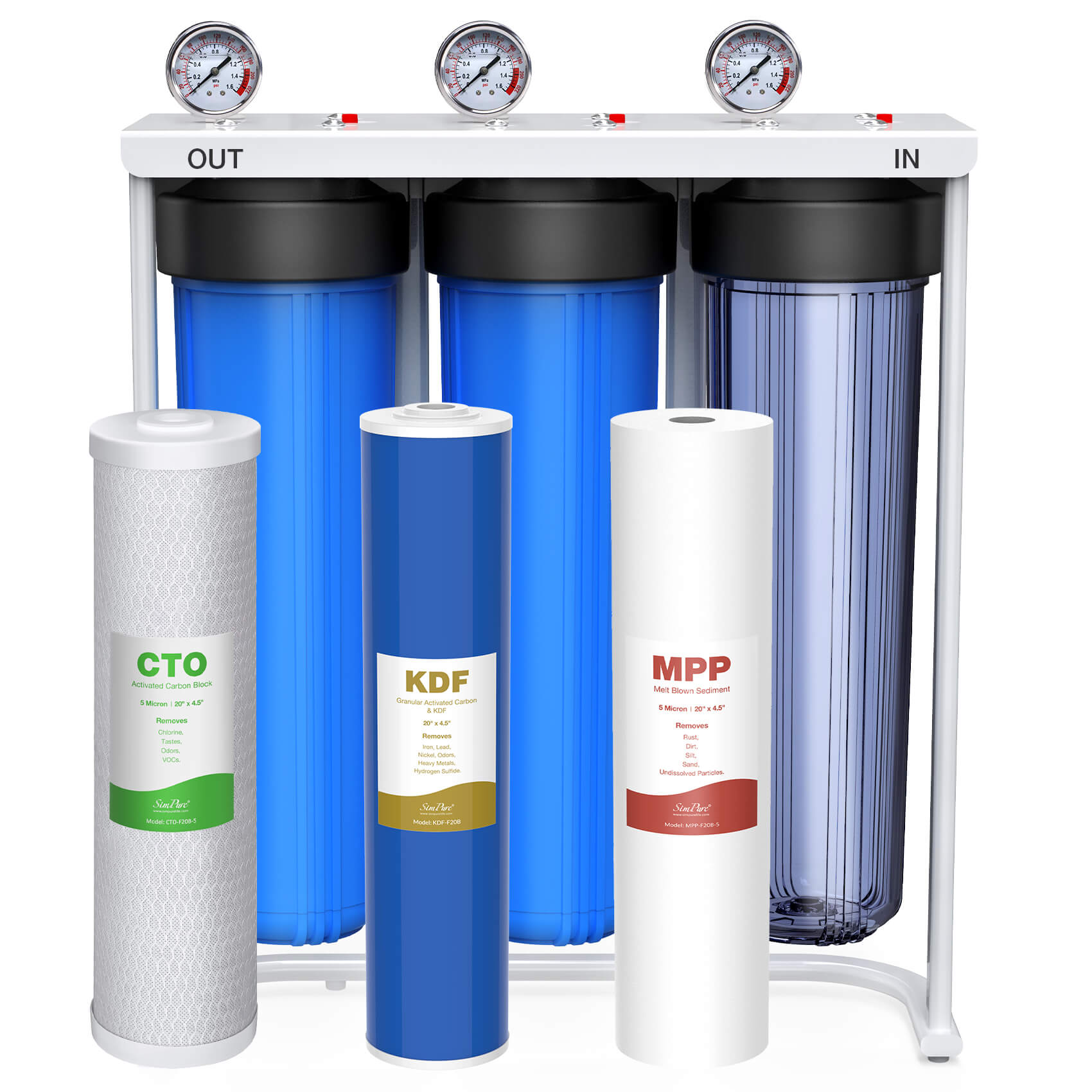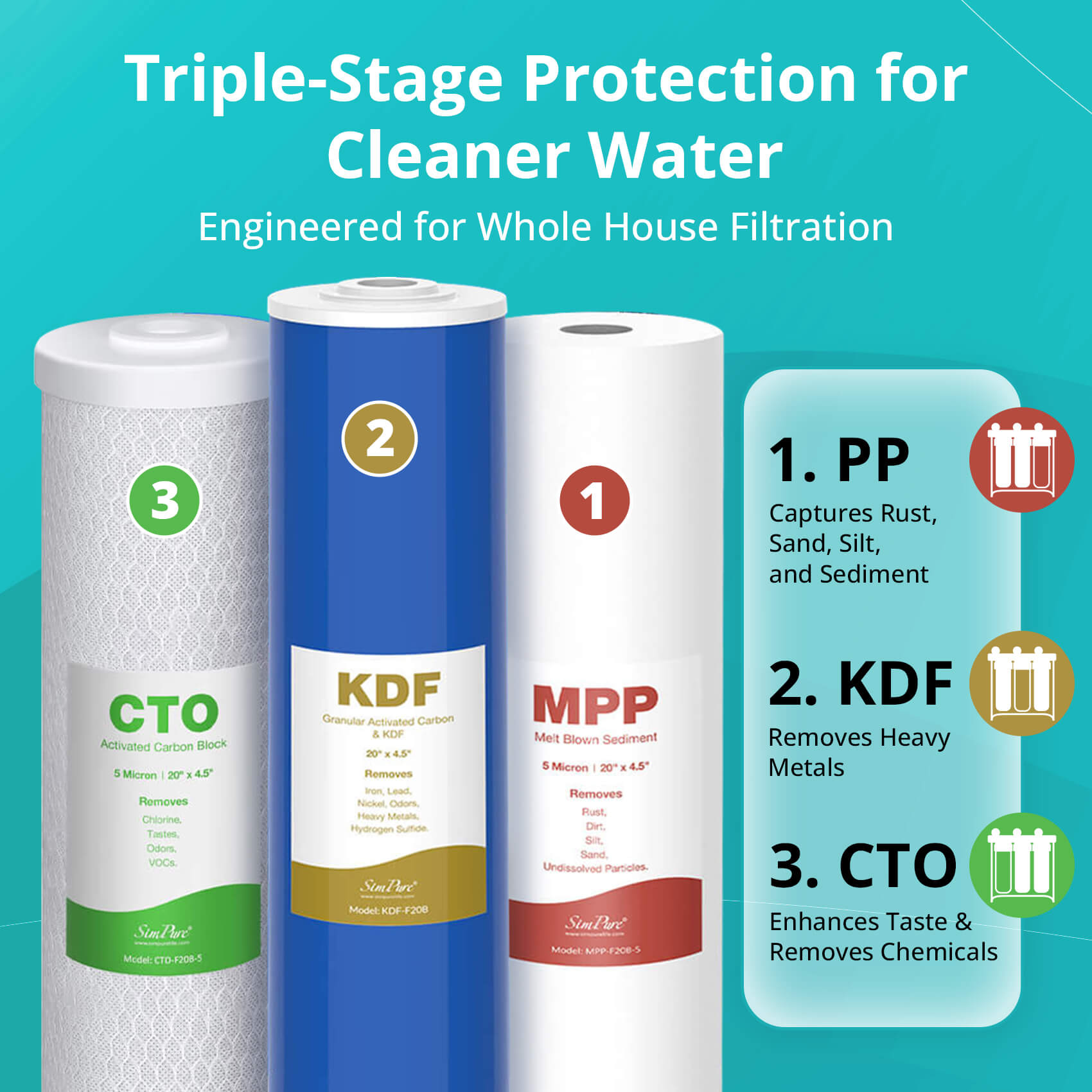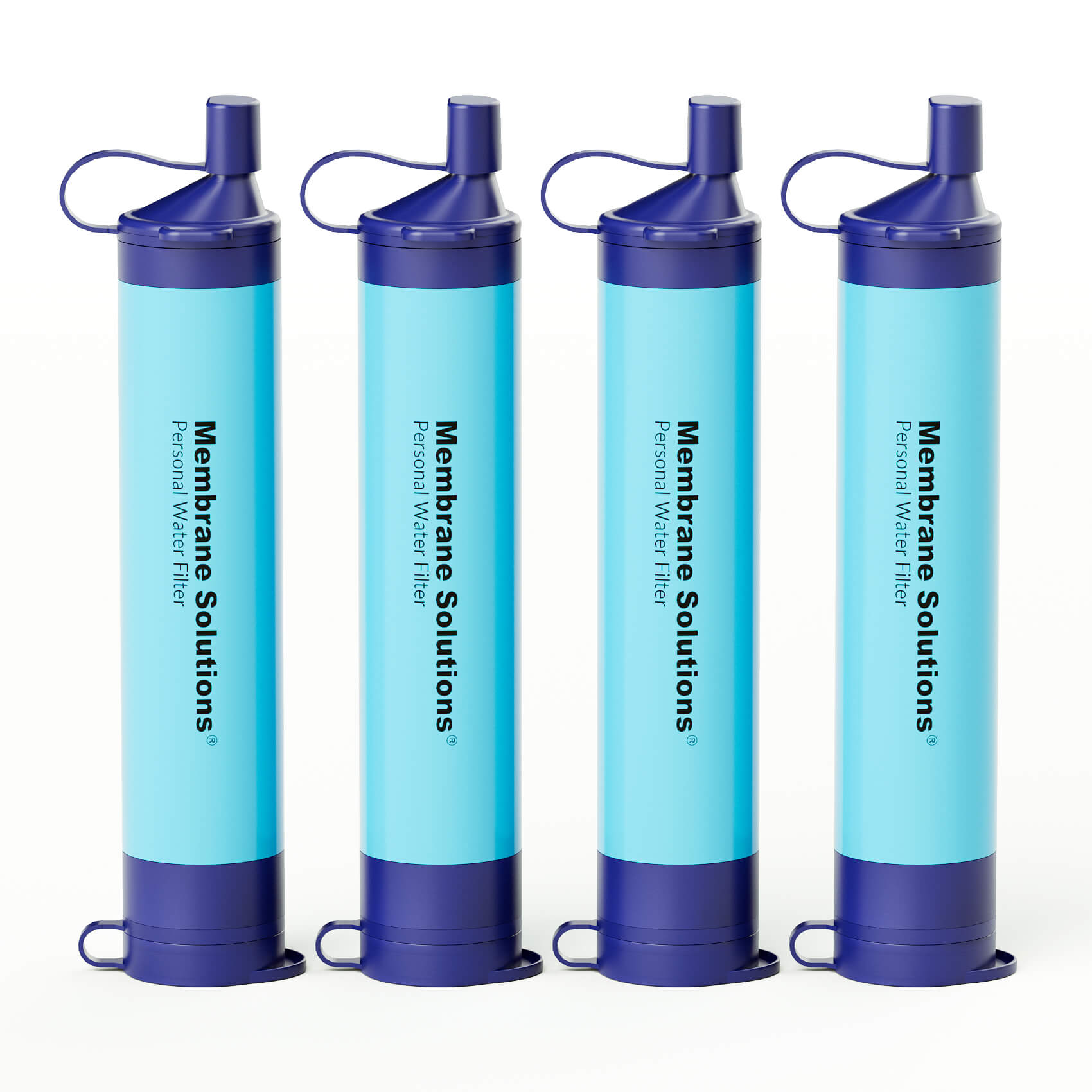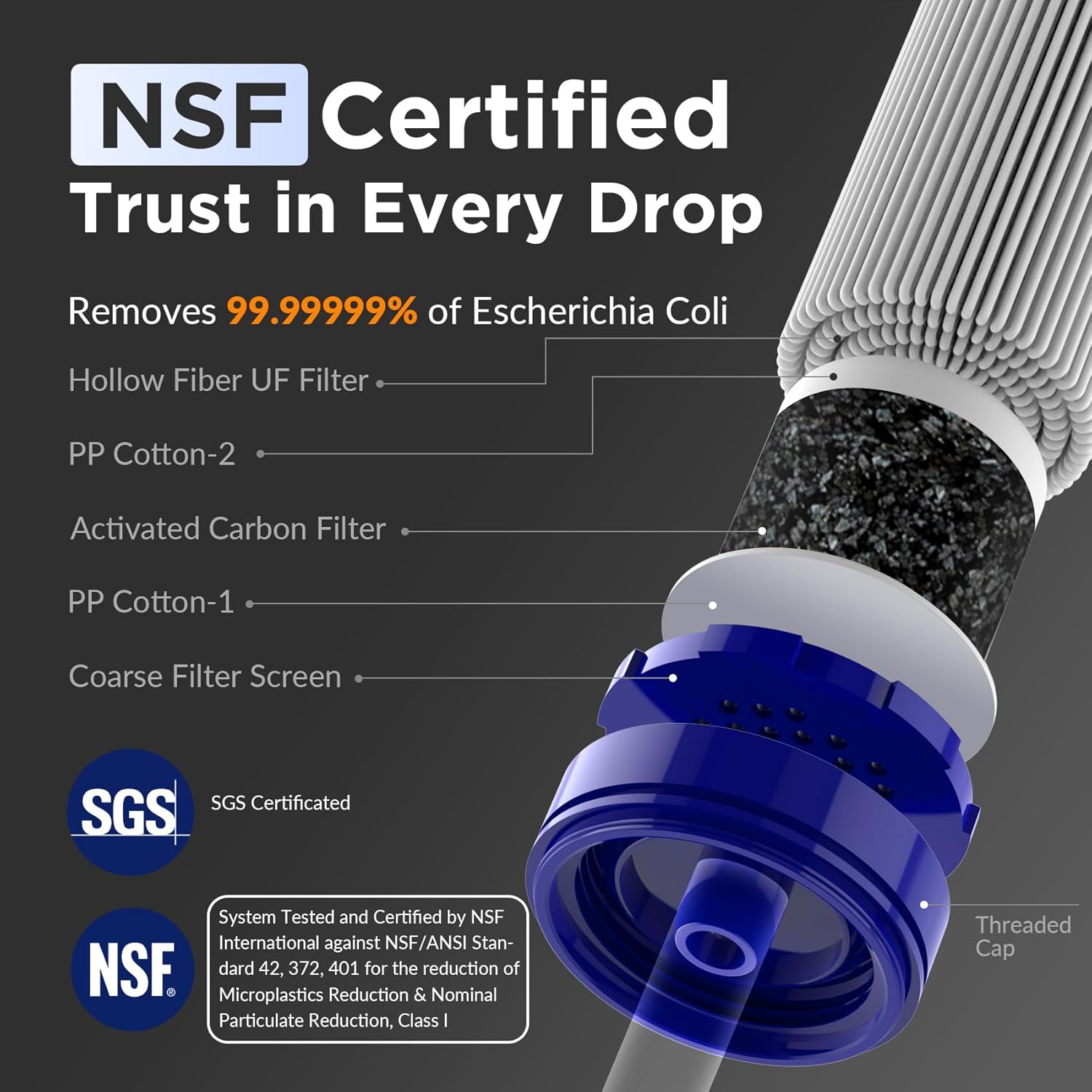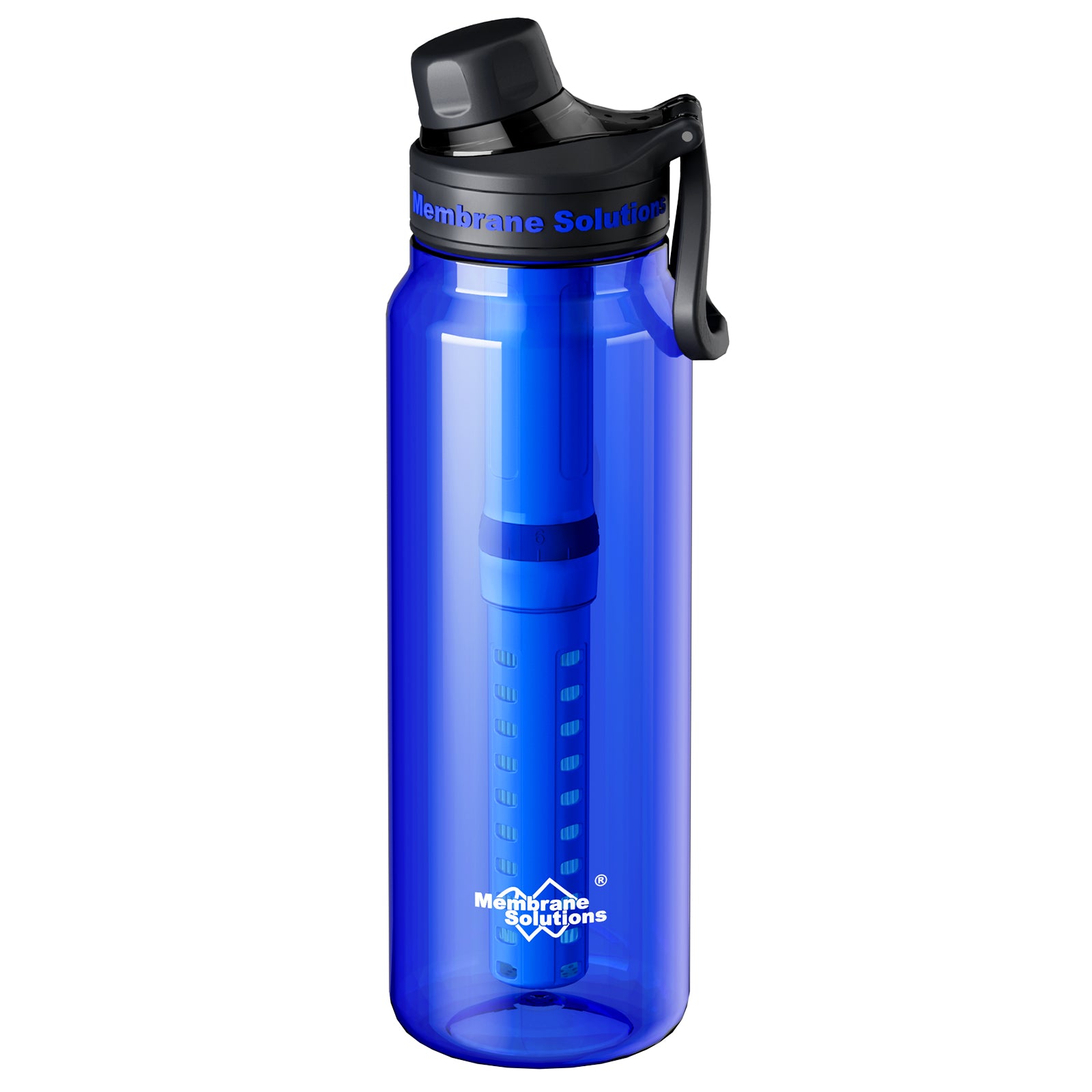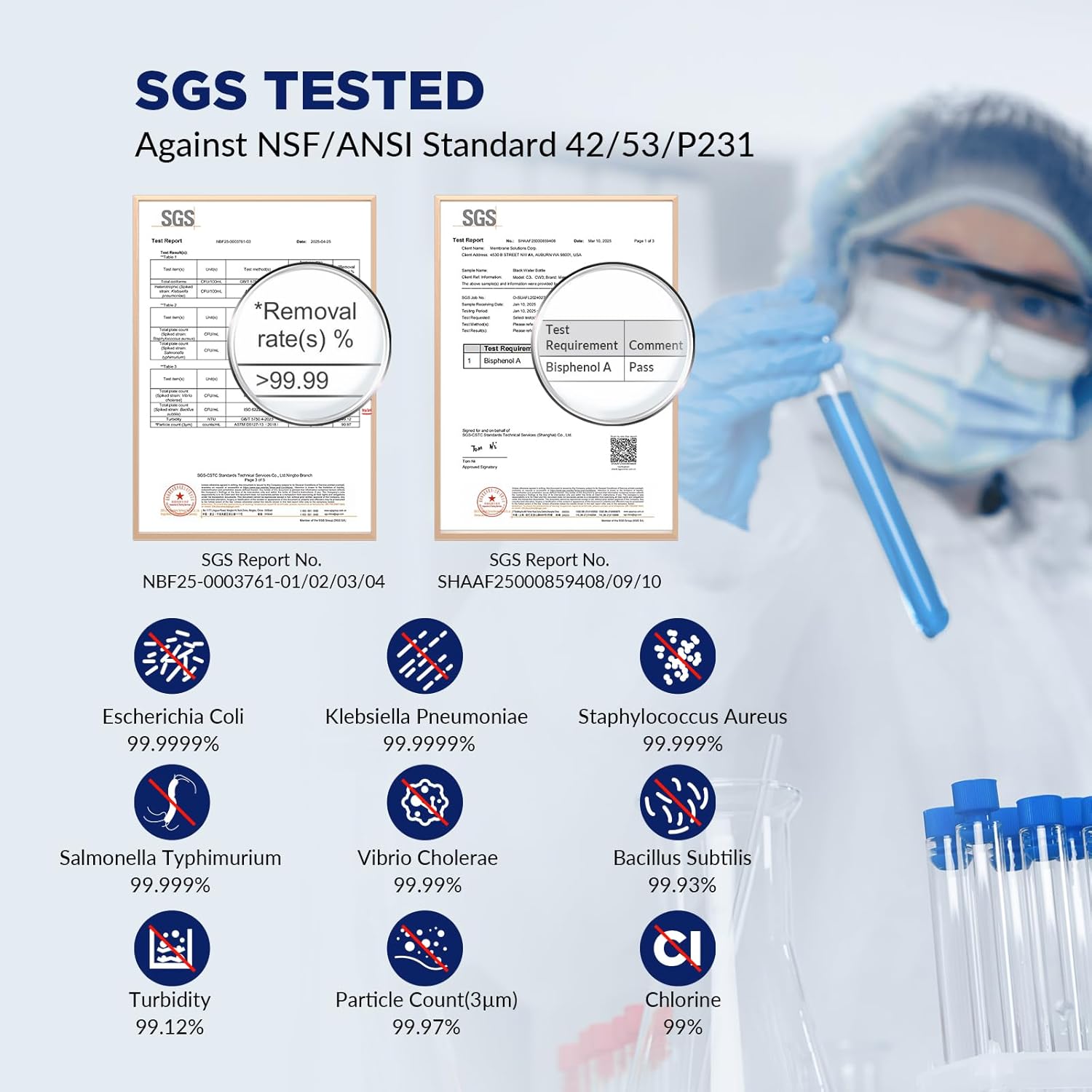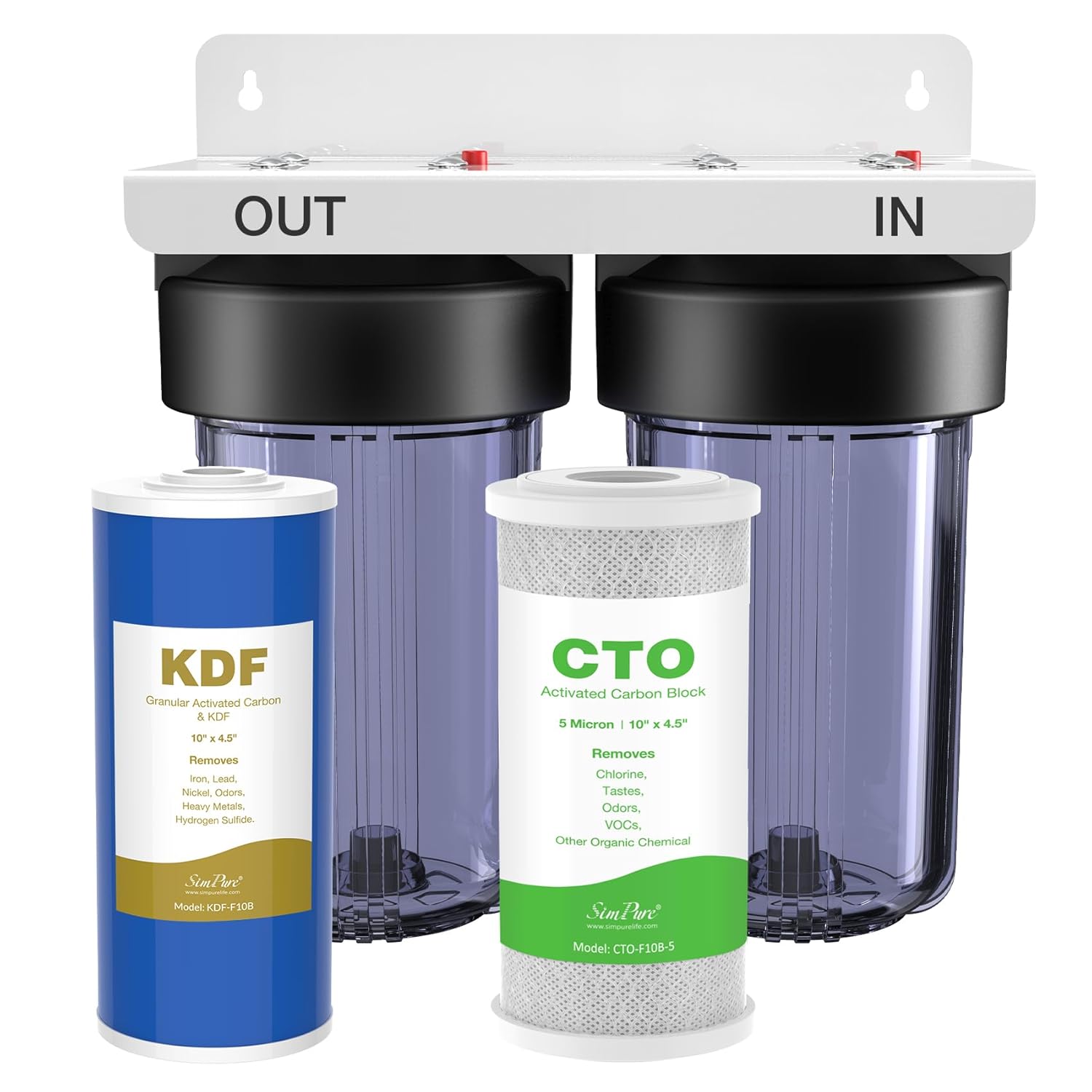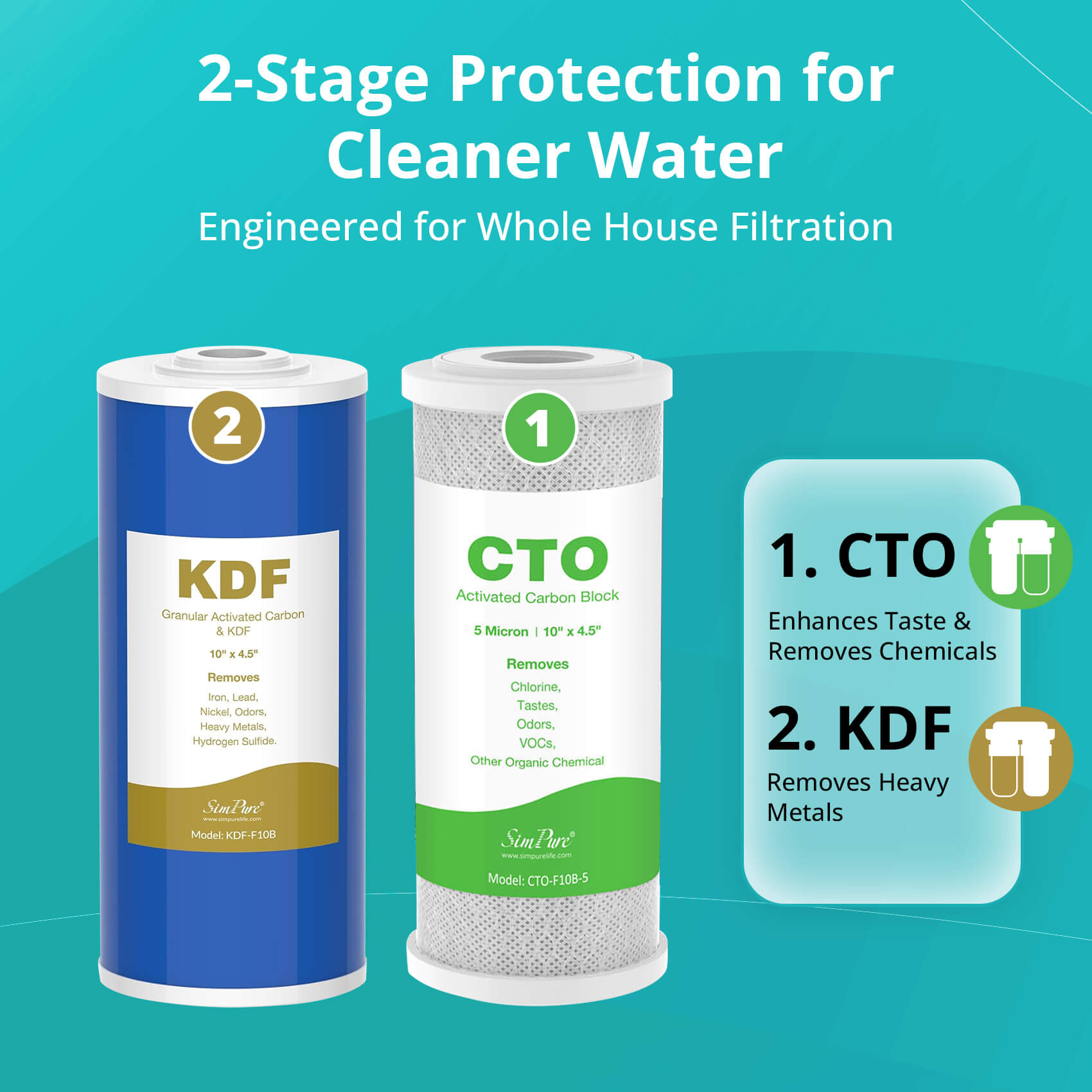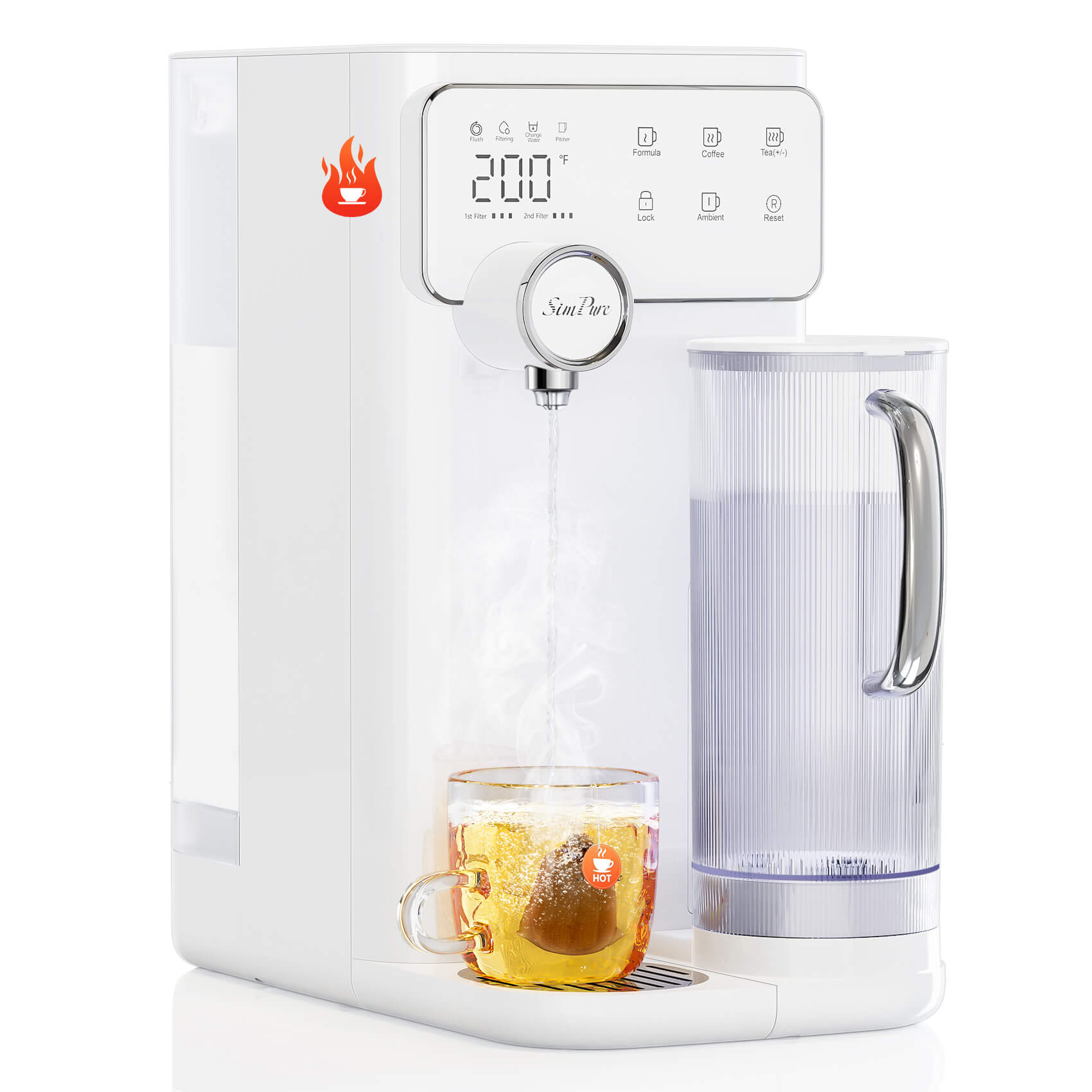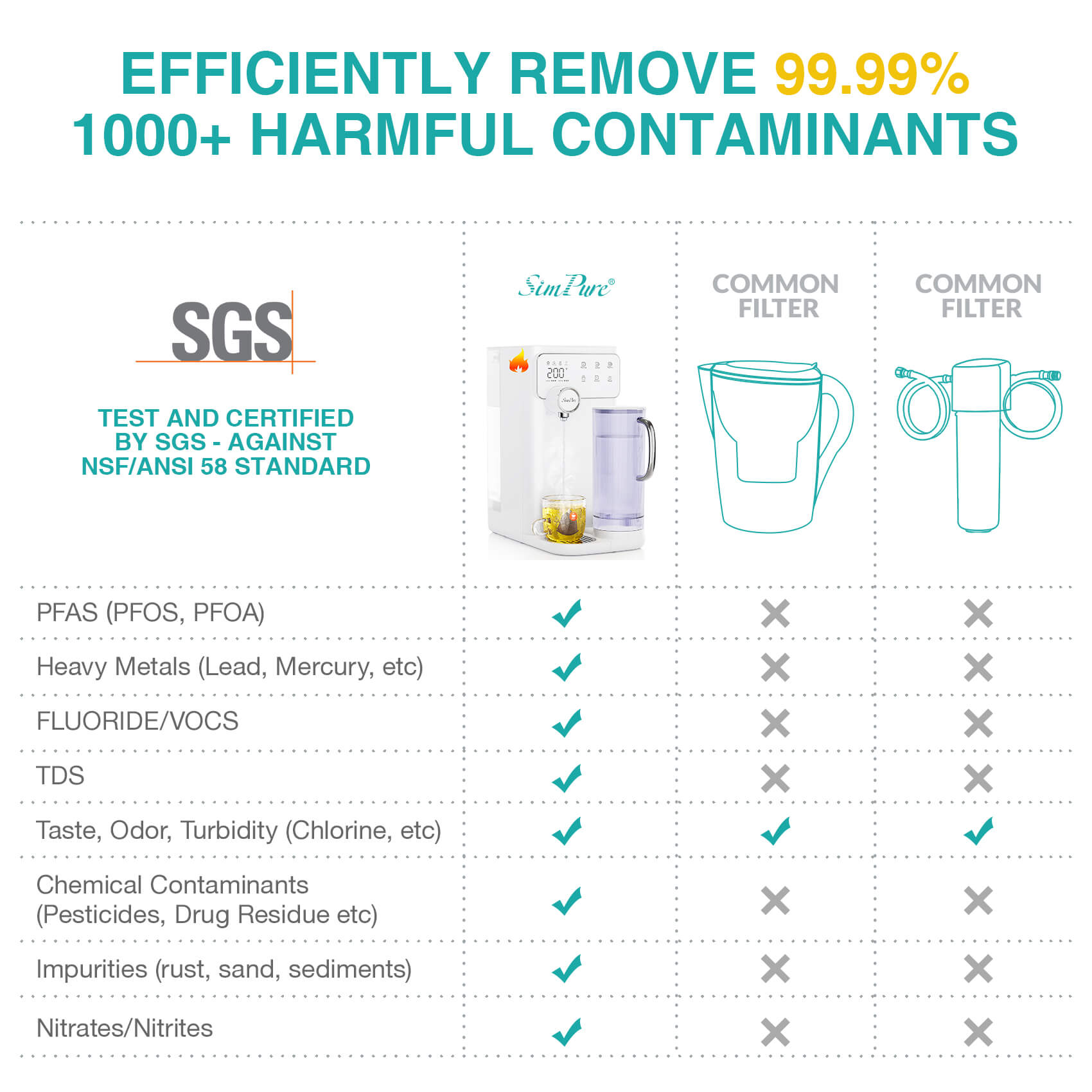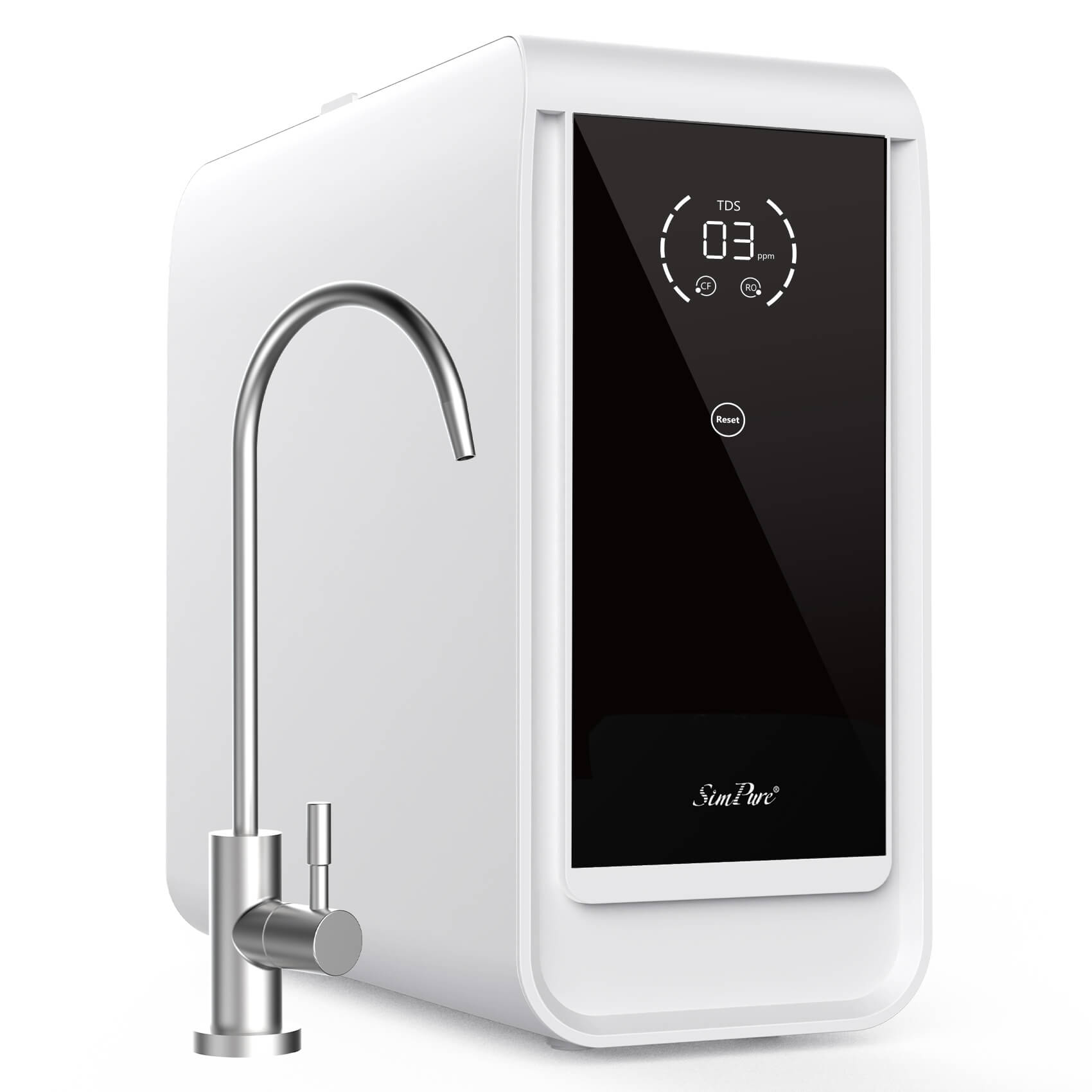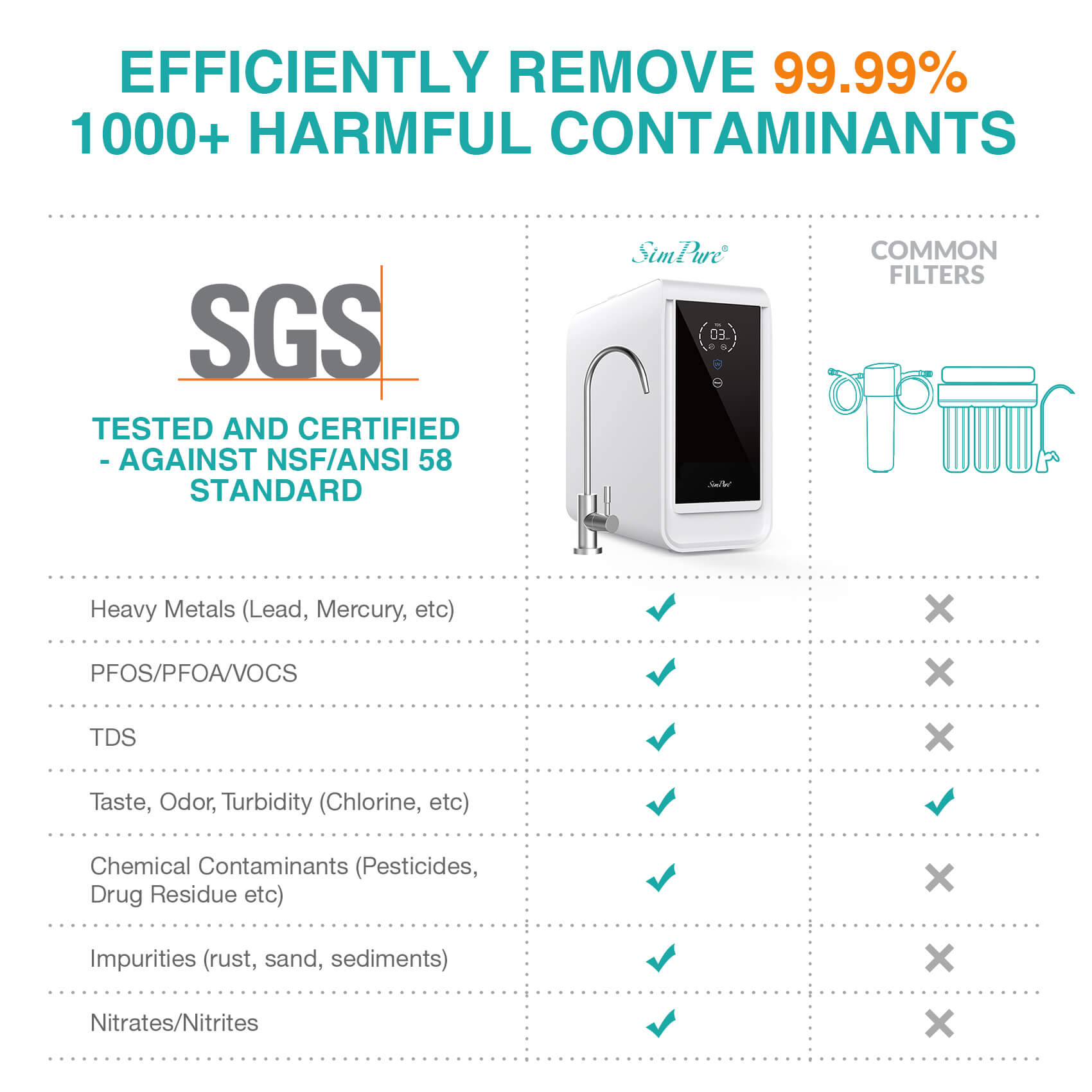Are you confused and worried about seeing bubbling tap water? No need to fret! In this article, we will explore the reasons behind this phenomenon and offer effective solutions to restore water clarity and taste. We'll cover everything from dissolved gases and chlorine treatment to trapped air in pipes, as well as temperature and pressure fluctuations, exploring each cause step by step. Moreover, we'll address essential safety concerns associated with bubbly tap water, so you can enjoy your water worry-free.
Table of Contents
Cause 1: Water Can Contain Dissolved Gas
Cause 2: Tap Water Is Treated with Chlorine
Cause 3: There May Be Air Trapped in the Pipes
Cause 4: Variations in Water Temperature and Pressure
The Safety Aspect: Is Bubbly Tap Water Safe to Drink?
Solutions for Dealing with Bubbly Tap Water
1. Before Using Water, Run the Faucet for a Few Minutes.
2. Consider Allowing the Water to Sit for a While Before Using It.
3. Check and Adjust the Temperature and Pressure Settings.
4. Use a Water Filtration System to Effectively Remove Chlorine.
Cause 1: Water Can Contain Dissolved Gas
Tap water may contain dissolved gases, such as nitrogen and oxygen from the air. As the water flows through the pipes, the pressure drops, causing the dissolved gas to come out of the water in the form of bubbles. These bubbles then flow along with the water, resulting in the formation of white foam.
Cause 2: Tap Water Is Treated with Chlorine
Municipal water treatment facilities commonly use chlorine to disinfect and eliminate harmful bacteria and pathogens from tap water. While chlorine is essential for water safety, an excessive amount can lead to the production of white foam in tap water, indicating a relatively high chlorine concentration. This raises concerns about potential hidden dangers in terms of drinking water safety.
Cause 3: There May Be Air Trapped in the Pipes
As tap water flows through the pipes, it creates negative pressure, leading to a suction force. If there's a leak or damage in the water supply system, air will be drawn into the pipes, and when you run the water from the tap, you'll notice the formation of small, dense air bubbles.
Cause 4: Variations in Water Temperature and Pressure
Temperature changes also influence the foam in tap water. Lower temperatures make it easier for gas to dissolve in the water, while higher temperatures allow the gas to escape more easily, resulting in more bubbles and white foam. Additionally, high water pressure in the pipeline can lead to compressed air dissolved in the water. When the water is released and the pressure drops, the dissolved air is released, causing an excess of air bubbles to form.

The Safety Aspect: Is Bubbly Tap Water Safe to Drink?
The safety of bubbly tap water relies on the cause of the bubbles. In most cases, bubbly tap water is safe to drink since it's typically a result of harmless dissolved gases like oxygen and nitrogen. However, if the bubbles are caused by excess chlorine or other pollutants, they can pose health risks.
To ensure the safety of your tap water, it's essential to assess its quality through water testing. If you have any doubts or notice an unusual taste or smell, consider using a water filtration system to remove potential contaminants. Seeking advice from a local water expert or contacting your water utility can also provide valuable insight into the safety of your tap water.
Solutions for Dealing with Bubbly Tap Water
1. Before Using Water, Run the Faucet for a Few Minutes.
When you notice air bubbles in your tap water, a straightforward yet effective solution is to run the tap for a few minutes before using the water. Allowing the water to flow helps flush out any trapped air or excess dissolved gas from the plumbing system. This process minimizes the chance of bubble water coming out of the tap and ensures a smoother, clearer flow.
2. Consider Allowing the Water to Sit for a While Before Using It.
Another helpful strategy is to let the water sit for a while before using it. When water is left undisturbed, it naturally releases dissolved gases, especially when it's cool. Allowing the water to settle gives any trapped gas a chance to escape, ultimately reducing air bubbles in the water.
3. Check and Adjust the Temperature and Pressure Settings.
To reduce air bubbles, consider checking and adjusting the temperature and pressure settings in your water heater or plumbing system. Lowering the temperature enhances the water's ability to retain dissolved gases, while maintaining a constant water pressure prevents sudden changes that could lead to the release of air and the formation of bubbles. Properly adjusting the temperature and pressure can result in a more stable, bubble-free water supply.
4. Use a Water Filtration System to Effectively Remove Chlorine.
If your tap water has a smell or taste reminiscent of swimming pool water, it's likely due to excess chlorine. Using a water filtration system can be an effective solution. You can consider using an RO water purification system to address the chlorine filtering issue. Whether installed in the kitchen or under the sink, an RO system can effectively remove harmful substances from tap water, including chlorine, viruses, bacteria, PFAS (PFOA/PFOS), pharmaceuticals, heavy metals like lead and arsenic, as well as TDS (fluoride, nitrates/nitrites), and more.
If your RO water still encounters bubble problems, you can find more information in SimPure's blog: "Bubbles in Reverse Osmosis Water? Find Out Why" Check it out for further insights and solutions.
In summary, the presence of dissolved gases, chlorine treatments, trapped air in pipes, and fluctuations in temperature and pressure can all lead to bubbly tap water. While most bubbly tap water is safe to rink, excess chlorine or other contaminants can pose health risks. To address this issue, water filtration systems, particularly RO water purification systems, prove effective in removing chlorine and other harmful substances from tap water, thereby enhancing its quality and taste. With the implementation of an RO water filtration system, you can relish clean, clear, and refreshing tap water, ensuring a safe and worry-free drinking water experience.



